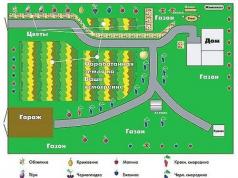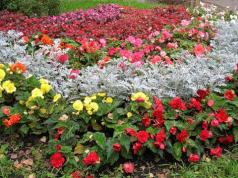Inexperienced gardeners may think that the blackberry / raspberry hybrid is an innovation, an achievement of modern breeders. But this is not the case. After all, if you see raspberries with large berries (more than 3.4 g), then there are blackberries. For example, such well-known varieties as "Taganka", "Commerce", "Mirage" - they all have blackberry genes.
Characteristic
A hybrid of raspberries and blackberries is called raspberry. It has the basic characteristics of mother plants. Visually, it resembles more the culture, which properties it inherited more. So, wanting to plant this plant on your site, you should familiarize yourself with the description of the varieties, reviews, photos of Yezhemalin.
This plant was bred to increase winter hardiness, drought resistance and raspberry yield. At the same time, the improvement should only have a positive effect on the palatability. Unfortunately, such unpretentious, undemanding hybrids were not obtained immediately. Many attempts by breeders have been unsuccessful.
At the moment, there are many varieties of ezemalina. Breeders have tried to combine only the positive properties of these plants. For example, a hybrid is often a semi-spreading bush with shoots that grow parallel to the ground. Branches can also grow first upward, and, having reached a certain height, bend downward.
The plant is attractive, decorative throughout the growing season. Large flowers of pink or white color will be an excellent decoration for the garden, in contrast to the inconspicuous flowering of raspberries. Large berries of jemalina, most often of bright color, are collected in large clusters.
To the delight of many gardeners, breeders have bred absolutely studless varieties. But most of the bushes have small thorns.
This perfectly tolerates the lack of watering, because the root system is more developed and penetrates much deeper into the soil, unlike raspberry varieties.
Description of the variety, photos, reviews about ezemalin attract many gardeners. After all, everyone wants to collect a good harvest of tasty, juicy, healthy berries at their site.
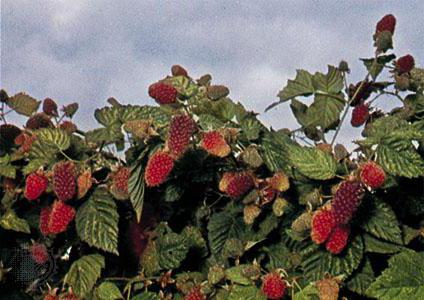
Yield
Garden raspberries often bear fruit later and longer than ordinary raspberries. The berries have a rich and pronounced taste. They are stored for a long time, so it is easy and simple to transport the berries.
Do you want to get a good harvest from year to year? Then special attention should be paid to the care and cultivation of jemalins.
Compared to hybrids, raspberry yields are significantly lower. The plant got this property from blackberries. But the raspberry provided the plant with frost resistance, which the blackberry lacks.
Many gardeners are interested in reviews, descriptions of ezemalina varieties. Photos of berries help you make the right choice.
Loganberry variety
This variety is considered to be the first hybrid of blackberries and raspberries. American breeder Logan at the end of the 19th century was working on breeding a new one. By chance, there was a cross-pollination of blackberries with raspberries growing nearby. The result is a variety that is unpretentious in cultivation and yields a good harvest.
The plant is thorny, has creeping shoots of medium length. The bush does not produce root suckers, but if they are damaged, root shoots will appear. The number of shoots for replacement is insignificant, but increases over time.
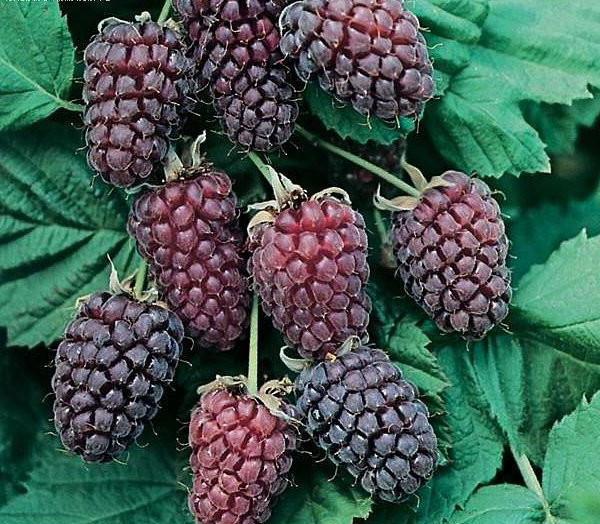
Shades, elongated, ripening unevenly. The diameter of the berry is on average 2 cm, length - 4 cm, weight - 8 g. Taste - sweet and sour with raspberry aroma.
The crop ripens early, like raspberries. Various varieties of this variety exist today. The Thornless Loganberry, for example, is a thornless plant with sweeter berries that ripen in late summer.
Due to its resistance to frost, this variety can be grown in central Russia.
Tayberry variety
Looking for a good variety? Pay attention to the description, photo, reviews of the "Tayberry" variety. This plant is vigorous, with powerful creeping shoots, which turn into a burgundy color as they ripen. Small rare thorns are present on the shoots.
Fruiting occurs in August. The berries are dark red, weighing 5-10 g, with a sweet and sour taste, similar to blackberries.
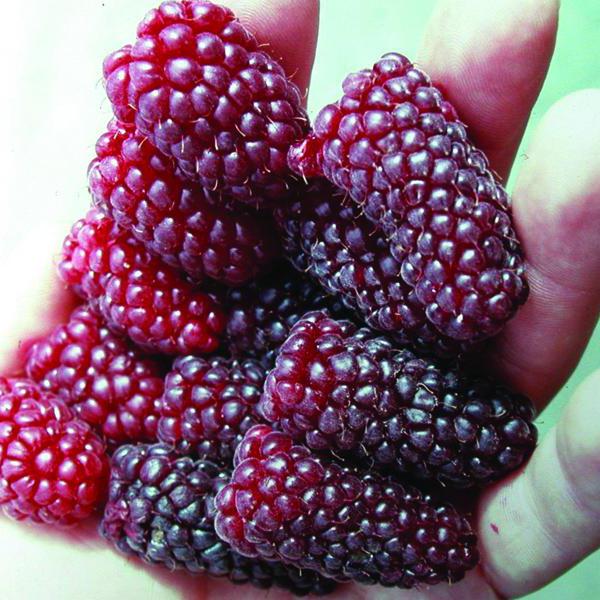
This variety is absolutely not picky about the composition of the soil. Therefore, many gardeners appreciate it. In addition, the plant shows resistance to various diseases and tolerates drought well.
The closest relative of this variety is Tummelberry, which is a more frost-resistant variety. But remember that these plants still need insulation for the winter.
The main disadvantage of this variety is the property inherited from the blackberry - the presence of small thorns on the branches and poor separation of the berries from the stalk.
Boysenberry variety
Boysenberry is one of the popular varieties. It is a drought-resistant plant with creeping shoots. There are 2 types of varieties: with and without thorns.
Berries are large, up to 5 cm in length, weighing up to 10 g, brownish-cherry color. When fully ripe in July-August, the berries become almost black. They have a pronounced blackberry aroma, pleasant sweet taste with a slight sourness.
The yield is small: up to 5 kg of berries can be harvested from an adult bush.
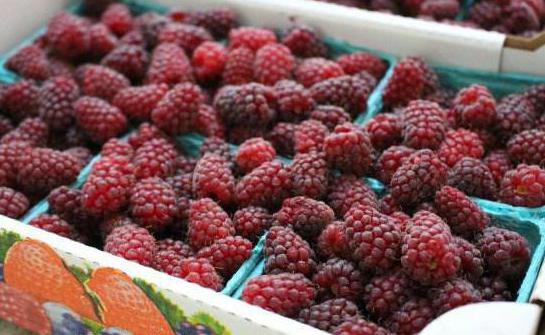
Variety "Texas"
"Texas" is a plant with long creeping shoots up to 4 m. From one adult bush of this variety, you can collect about 6 kg of tasty, dark red berries. Plants bear fruit for over 15 years.
The berries have a sweet and sour taste, and as they darken, they become tastier. Fully ripe, dark berry has practically no sourness. There is a blackberry aroma.
The plant is not afraid of harsh winters and rainy cool summers. This variety of ezhemalina bears fruit well and grows in the Middle lane.
The disadvantages include sharp thorns and poor separation of the stalk from the ripe berry.
Youngberry and Sunberry varieties
These are late-ripening varieties. Shoots with thorns. The berries are dark red with a slight sourness. The crop can be harvested before the first frost. Many people use these varieties to create a hedge in their personal plot, they can become a real decoration of the garden.
At the moment, there is a wide variety of ezemalina varieties. Sometimes the difference between them can be significant, so every gardener will be able to choose a variety that suits him.

Planting a plant
Ezhemalina is an unpretentious plant. It can be grown on any soil, but loose, fertile, moderately moist soils are best suited. It is advisable to choose areas that are protected from the wind.
The planting of the jaggery can be carried out in the spring or fall. When planting vegetative seedlings, it is necessary not to damage the clod of earth.
The bushes are recommended to be planted in rows at a distance of 80 cm from each other. Between the rows there should be 1.5-2 m. With a denser planting, the plants will not have enough sunny color, this will affect the quantity and taste of the crop.
Before planting, it is necessary to prepare pits 40 x 40 x 40 cm. The extracted soil must be mixed with humus. It is not recommended to use chicken manure, because a large amount of organic fertilizers causes increased growth of the bush, but negatively affects winter hardiness.
Having placed the seedling in the hole, it is necessary to carefully spread the roots and cover with prepared soil. The soil is watered abundantly. Top up the soil if necessary.
Preparing for winter
All plants must be prepared for wintering. For all shoots that have reached a length of 2 meters in a year, the tops should be pinched. This improves the branching of the plant. With long side shoots, you can also carry out a similar manipulation.
In regions with cold winters, shoots are not cut, but insulated. How to shelter ezemalina for the winter? It is enough to untie the shoots from the trellises and lay them on the ground. A variety of covering material is laid on top. Leaves, burlap, straw, peat are used as insulation.

Reproduction of ezemalina
Seed germination in hybrids is quite high, but not all seedlings grown from them retain the properties of the parent plant. Therefore, most often, the reproduction of ezhemalina occurs by layering and cuttings. These are the most effective ways to grow jemalberries. Seedling care is just as important as it is for an adult plant.
During autumn pruning, small shoots of twigs with 1-2 buds can be rooted in a pot or directly in the open field. It is advisable to create greenhouse conditions at least temporarily. To do this, the cuttings can be covered with a jar. You should also make sure that the soil is constantly moist. In spring, rooted shoots can be transferred to a permanent growth site. Experienced gardeners argue that lignified cuttings are also suitable for reproduction of jagged trees. They take root very well.
Reproduction by layering is also easy. To do this, in the spring, you need to dig in young shoots to a depth of 20 cm. The shoot itself must be pressed down from above. This area needs to be well watered throughout the summer. By the fall, they will take root in several places. You just need to cut the shoot into several young seedlings and plant them in a permanent place of growth. But it is better to postpone the transplant until the spring. Until this time, it is undesirable to cut off the layers from the mother plant.
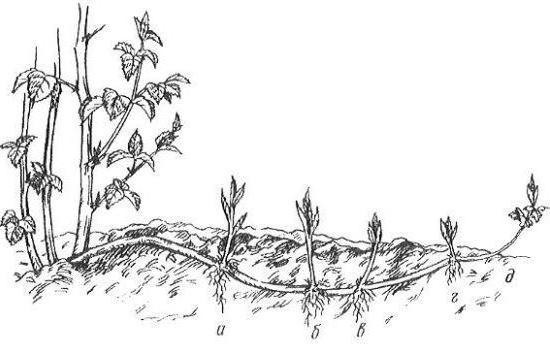
Sometimes gardeners propagate this plant by root cuttings. To do this, in the spring, they take the roots of an adult plant, cut them into 10 cm pieces. They are planted separately from each other, watered and loosened the soil. After a certain time, a new plant will grow from such cuttings.
Diseases and pests
Most often, hybrids do not produce root growth. Thanks to this, the time spent on caring for the plant is significantly reduced. Many gardeners are interested in what kind of diseases and pests are scary? Breeders claim that this plant is resistant to several fungal diseases that often threaten raspberries and blackberries.
Sometimes verticilliasis or powdery mildew can be found on the Boysenberry and Youngberry varieties. But for the "Loganberry" variety, these misfortunes are not at all scary. But here "Loganberry" and "Youngberry" are susceptible to the development of rust, and "Boysenberry", on the contrary, shows excellent resistance to this disease.
Breeders claim that there are varieties that are resistant to almost all diseases.
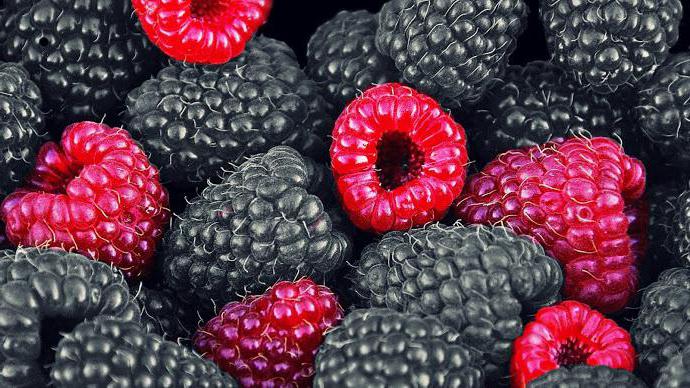
Conclusion
Ezhemalina is a tasty, large berry that should definitely be on every garden plot. This plant is unpretentious, requires minimal maintenance. And from one bush you can collect a large harvest of tasty and ripe berries.

